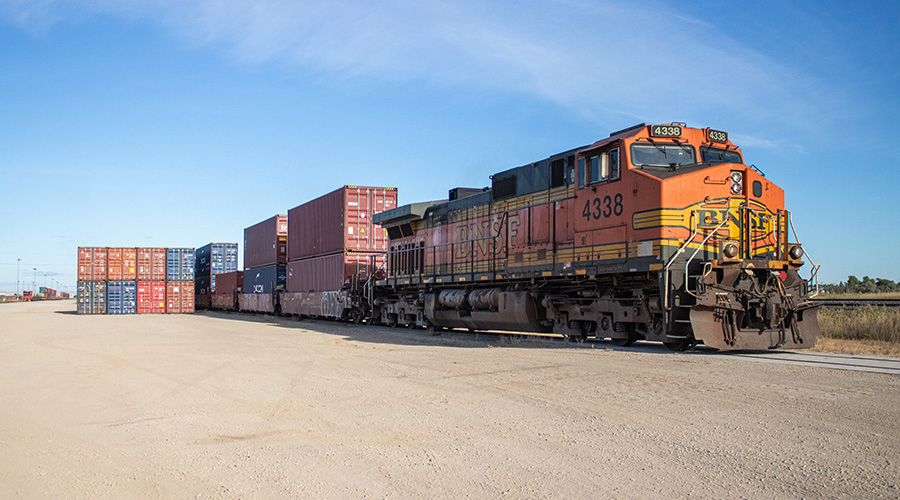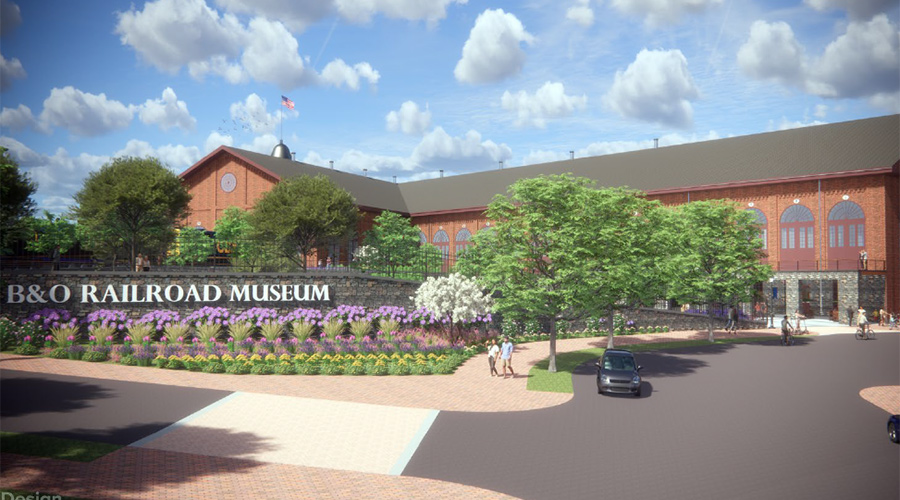Delving into Class Is’ capex for 2022
3/7/2022
By Jeff Stagl, Managing Editor
BNSF Railway Co. ended February with a major announcement, one that stands out because the Class Is have been unusually tight-lipped about this important investment topic so far in 2022: capital expenditures.
BNSF unveiled a $3.55 billion capex budget for this year, a 19.5% increase from the $2.97 billion spent on capital commitments in 2021. The budget includes $2.71 billion for infrastructure maintenance, $580 million for expansion projects and efficiency improvements, and $259 million for freight-car and other equipment acquisitions.
The spending plan will support growth objectives and help foster a more reliable railroad, BNSF officials said in a press release.
Planned maintenance work calls for replacing 381 miles of rail and 2.7 million ties, surfacing nearly 14,000 miles of track and performing undercutting work. Infrastructure maintenance is the largest component of this year’s capex because it helps avoid unscheduled service outages that can slow down the network and reduce capacity, BNSF officials said.
Major projects pegged in 2022 include continuing a multi-year effort to add several segments of new double track in eastern Kansas; beginning a multi-year project to add a new segment of triple track in California; advancing a multi-year bridge undertaking near Sandpoint, Idaho; starting multi-year intermodal facility expansion projects in Chicago and north Texas; and completing major improvements to an intermodal facility in San Bernardino, California.
Instead of making similarly splashy announcements about their 2022 capex plans, other Class Is briefly touched on capital spending during their fourth-quarter earnings conferences in late January. For example, CN leaders only said this year’s capex budget will total about 17% of annual revenue. A “big rollout” of the 2022 spending plan is coming soon, said CN spokesman Jonathan Abecassis in a March 3 email.
 In the near future, CN expects to formally announce its ’22 capex budget and describe major infrastructure projects planned for this year. Credit: CN
In the near future, CN expects to formally announce its ’22 capex budget and describe major infrastructure projects planned for this year. Credit: CN Union Pacific Railroad leaders didn’t even provide a snippet about their capex plans at their Jan. 20 earnings conference. But in a recent annual 10-K report to the U.S. Securities and Exchange Commission, UP leaders wrote that 2022 capex will total about $3.3 billion, up 10% from 2021’s $3 billion spending plan.
This year’s budget targets work to continue hardening infrastructure, replacing older assets, and improving the network’s safety and resiliency. The Class I also anticipates targeted freight-car acquisitions; a continuous modernization of the locomotive fleet; investments in growth-related projects to drive more carloads to the network; new ramps to efficiently handle volumes from new and existing intermodal customers; and projects aimed at improving operational efficiency.
“These investments enhance safety, support the transportation needs of our customers, improve our operational efficiency, and support emission reduction initiatives … growth and customer demand,” UP leaders wrote in the report. “The capital plan may be revised if business conditions warrant, or if new laws or regulations affect our ability to generate sufficient returns on these investments.”
In terms of infrastructure improvements, the railroad expects to replace or install 496 miles of rail and 3.4 million ties, extend a number of sidings, and renew bridges totaling 3.2 bridge miles and 1.3 deck miles.
Meanwhile, CSX is targeting a 2022 capex budget of about $2 billion, up about $200 million from last year’s plan.
“Our top capital priority is and always has been maintaining and improving the safety and reliability of our network. In 2022, we will replace in excess of 500 miles of rail as we continue to focus on the core infrastructure,” said CSX President and CEO James Foote during the Class I’s Jan. 20 earnings conference. “The cost of this capital work has been offset by significant improvements in the efficiency of our engineering programs.”
CSX also plans to construct a fourth track in Alexandria, Virginia, extend six sidings, continue major work at the Howard Street Tunnel in Baltimore, build a container yard at 63rd Street in Chicago, advance three major bridge projects, upgrade several movable bridges and rehabilitate a number of steel bridges.
For Norfolk Southern Railway, 2022 capex is targeted at $1.8 billion to $1.9 billion. Capital spending last year totaled about $1.6 billion.
Infrastructure improvements are expected to be comparable to 2021, according to an NS presentation at the National Railroad Construction and Maintenance Association’s annual conference held in early January. Crews will replace about 500 miles of rail, perform 2,700 miles of tie and surfacing work, install 2.25 million ties and replace 450 panel turnouts compared with 439 miles, 2,219 miles, 1.9 million and 405, respectively, in 2021.
 The rail changeout agenda for NS this year calls for replacing about 500 miles of welded rail. Credit: Norfolk Southern Railway
The rail changeout agenda for NS this year calls for replacing about 500 miles of welded rail. Credit: Norfolk Southern Railway NS also plans to build a second main between Nokesville and Calverton, Virginia; construct six 15,000-foot sidings in Alabama, Georgia, Ohio and Virginia; expand or rehab intermodal facilities in Chicago and Charlotte, North Carolina; replace 21 bridges and rehab 28 bridges; rehab one tunnel; and replace 140 culverts.
For Canadian Pacific, 2022 capex is pegged at about CA$1.55 billion, which is in line with last year’s budget, said CP spokesman Andy Cummings in an email. The Class I declined to provide capital spending details because of its ongoing effort to merge with Kansas City Southern.
Also due to that proposed marriage, KCS will not disclose its 2022 capex plans, said KCS spokesperson Doniele Carlson in an email. The railroad remains in a voting trust while the Surface Transportation Board reviews the merger proposal.
But prior to forging the merger agreement with CP, KCS had expected capex to moderate as part of its precision scheduled railroading operations, Fitch Ratings analysts wrote in a March 2 report.
“Capex as a percent of [annual] revenue was expected to trend to around 17% compared to the mid-20% range a few years ago, when KCS was acquiring equipment off of operating leases,” they wrote.


